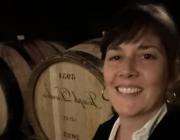Citation:
Abstract:
Wine matrix is composed of a vast number of compounds that depend on a wide range of factors associated with the raw material, such as grape variety and vineyard location, and processing, such as the winemaking protocol and barrel ageing. Monitoring all aspects of winemaking from grape to wine is a technically challenging task, as different key compounds are related to each step, requiring different analytical methods for their estimation. Nowadays, efforts are made to avoid the use of chemical reagents that can be harmful to the environment and lower the energy consumption during chemical analyses. Ideally, analyses should be performed using a single instrument, without the need for solvents or lengthy preparatory steps. In the past few years, due to its cost-effectiveness and the speediness of the analyses while using low sample volumes, IR spectroscopy has been effectively applied in grape and wine analyses, from compound identification and quantification to wine profile characterisation and authentication. One of its most advantageous features is that it can produce a spectral fingerprint that is unique to each sample, making it highly efficient, especially for authentication purposes. This review examines the feasibility of employing IR spectroscopy for the assessment of all steps required in winemaking, from grape to wine, and its ability to produce integrated results.

